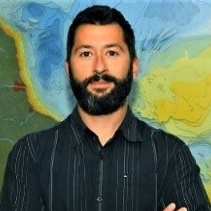Relative Sea Level Change and Coastal Vulnerability
A special issue of Water (ISSN 2073-4441). This special issue belongs to the section "Oceans and Coastal Zones".
Deadline for manuscript submissions: closed (24 January 2022) | Viewed by 16754
Special Issue Editors
Interests: coastal geomorphology; relative sea level change; sea flooding risk for the future
Special Issues, Collections and Topics in MDPI journals
Special Issue Information
Dear Colleagues,
Sea level rise is one of the major consequences of climate change, and it is already affecting coastal communities and ecosystems around the world. However, the current rate of sea-level rise is not the same everywhere. The melting of continental ice sheets and glaciers is a prime driver of sea-level rise over century to millennia time scales. Glacial and hydro-isostatic adjustment (GIA) is a combination of physical processes that regulate the deformation of the solid earth and of the geoid in response to surface ice and water loading variations. Hence, GIA contributes to the strong regional variability of ice-driven mean and relative sea-level (RSL) change. Vertical tectonic movements and mantle dynamic topography also contribute to increase the variability of RSL change in space and time. Furthermore, a strong contributor to regional sea-level variability also on much shorter time scales is thermal expansion in temperate sea, caused by density changes due to temperature increase. If combined and added to global sea level projections for 2100, GIA, vertical tectonic motions, thermosteric expansion, and ocean dynamics can cause large regional differences in the behavior of all of the world’s coasts. In this Special Volume, we aim at discussing geomorphological and geophysical data and models that currently highlight the problems in coastal vulnerability expected in 2100. This Special Issue therefore aims to present recent advances on relative sea level rise and projections for the future. Specifically, manuscripts about the following topics are of interest for this Special Issue:
- New and revised coastal geomorphological evidences such as fossil forms, deposits (corals, speleothems, etc.) and erosive features;
- New and revised archaeological remains that are well connected with the mean sea level;
- Instrumental data and time series: tide gauges, GPS, INSAR, satellite altimetry and gravity, long-range baseline interferometry, gravimetry;
- State-of-the-art numerical modeling: (paleo)climate, ice sheets, glacial and hydro-isostatic adjustment, mantle dynamic topography, sediments and karts isostasy, ocean and coastal hydrodynamics, and geomorphodynamics;
- New neo-tectonic rates (Short and long term) in coastal areas will also be welcome.
Dr. Fabrizio Antonioli
Prof. Dr. Paolo Stocchi
Guest Editors
Manuscript Submission Information
Manuscripts should be submitted online at www.mdpi.com by registering and logging in to this website. Once you are registered, click here to go to the submission form. Manuscripts can be submitted until the deadline. All submissions that pass pre-check are peer-reviewed. Accepted papers will be published continuously in the journal (as soon as accepted) and will be listed together on the special issue website. Research articles, review articles as well as short communications are invited. For planned papers, a title and short abstract (about 100 words) can be sent to the Editorial Office for announcement on this website.
Submitted manuscripts should not have been published previously, nor be under consideration for publication elsewhere (except conference proceedings papers). All manuscripts are thoroughly refereed through a single-blind peer-review process. A guide for authors and other relevant information for submission of manuscripts is available on the Instructions for Authors page. Water is an international peer-reviewed open access semimonthly journal published by MDPI.
Please visit the Instructions for Authors page before submitting a manuscript. The Article Processing Charge (APC) for publication in this open access journal is 2600 CHF (Swiss Francs). Submitted papers should be well formatted and use good English. Authors may use MDPI's English editing service prior to publication or during author revisions.
Keywords
- sea level rise
- coastal geomorphology
- stratigraphy
- archaeology
- instrumental sea-level measurements
- remote sensing
- numerical modelling
- glacial and hydro-isostatic adjustment
- (neo)tectonics
- future projections
Benefits of Publishing in a Special Issue
- Ease of navigation: Grouping papers by topic helps scholars navigate broad scope journals more efficiently.
- Greater discoverability: Special Issues support the reach and impact of scientific research. Articles in Special Issues are more discoverable and cited more frequently.
- Expansion of research network: Special Issues facilitate connections among authors, fostering scientific collaborations.
- External promotion: Articles in Special Issues are often promoted through the journal's social media, increasing their visibility.
- e-Book format: Special Issues with more than 10 articles can be published as dedicated e-books, ensuring wide and rapid dissemination.
Further information on MDPI's Special Issue polices can be found here.






